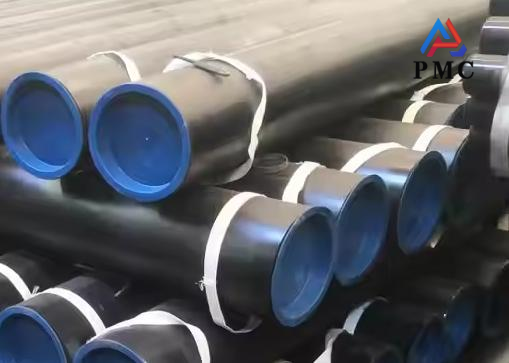
Non-standard SMLS Pipes: Special Strength of Industrial Pipes
What is non-standard smls pipe?
Non-standard smls pipes, that is, non-standard seamless steel pipes, refer to seamless steel pipes whose size, material, performance, etc. do not meet any existing public standards (such as GB/T 8162 "Seamless Steel Pipes for Structures", GB/T 8163 "Seamless Steel Pipes for Transporting Fluids", etc.). Its appearance is mainly to supplement the deficiencies of national standard seamless steel pipe specifications.
In actual applications, in some special engineering projects, equipment maintenance and renovation, small batch customized products or equipment, and material and process testing and research, the specifications of national standard smls steel pipes often cannot meet the needs. At this time, non-standard smls pipes play an important role. For example, in the manufacture of some large special equipment, steel pipes of special sizes and special materials may be required, and non-standard smls pipes can meet these special requirements well.
Characteristics of non-standard smls pipes
Special size: The most common non-standard is the non-standard size, such as the outer diameter, wall thickness, length, etc., which are beyond or less than the range specified by the standard. Some engineering projects may require steel pipes of unconventional sizes, and then non-standard products need to be customized.
Special materials: Some projects may require the use of alloy steel with special composition, or have special requirements for the content of certain elements, which also fall into the non-standard category.
Special performance: For example, the requirements for mechanical properties (tensile strength, yield strength, elongation, etc.) and chemical properties (corrosion resistance, high temperature resistance, etc.) exceed the standards.
Special use: Used for some unconventional purposes, which are not clearly specified in the standard specifications.

Application of non-standard smls pipe
Non-standard smls pipes are mainly used in the following situations:
Special engineering projects: Some large projects or special equipment require the use of steel pipes with unconventional sizes or properties.
Special engineering projects: Some large projects or special equipment require the use of steel pipes with unconventional sizes or properties.
Equipment repair and modification: When repairing or modifying some old equipment, it may be necessary to use non-standard steel pipes that are the same or similar to the original equipment.
Small batch customization: Some small batch, customized products or equipment may require the use of non-standard steel pipes.
Tests and Research: When conducting material or process tests and research, it may be necessary to use non-standard steel pipes with special composition or properties.
How to distinguish non-standard and national standard smls pipes?
1. Check standards: Check relevant national standard documents in detail, such as GB/T 8162, GB/T 8163, etc., and compare whether the size, material, performance and other parameters of smls pipes are consistent with the standards. For example, the standard stipulates that the allowable deviation of the outer diameter of a certain type of smls pipe is ±0.5mm. If the actual measured outer diameter deviation of the steel pipe exceeds this range, further judgment is required.
2. Check the product label: The product label of national standard smls pipe is usually clear and standardized, including detailed information such as manufacturer, implementation standard, specification model, material, etc.; the label of non-standard seamless pipe may be unclear, incomplete or even unmarked.
3. Consult professionals: If you still have doubts about the standard types of smls pipes, you can consult industry experts, technical personnel of steel pipe manufacturers, or entrust a professional third-party testing agency to conduct testing to determine whether it meets national standards through professional means.
Things to note when ordering non-standard smls pipes
1. Clarify technical requirements: When ordering non-standard smls pipes, be sure to provide suppliers with detailed technical requirements, including size, material, mechanical properties, chemical composition, surface treatment, etc. It is best to provide drawings or technical specifications.
2. Choose a qualified supplier: Choose an experienced and technically strong supplier (Permanent Steel Manufacturing Co.,Ltd ) to ensure product quality.
3. Sign a detailed contract: Specify the product's technical requirements, delivery date, acceptance criteria, after-sales service, etc. in the contract to protect your own rights and interests.
4. Strict quality inspection: After receiving the goods, strict quality inspection is carried out to ensure that the products meet the requirements.
5. Implementation standards: Even for non-standard products, relevant standards should be referred to as much as possible. For example, in terms of mechanical properties, chemical composition, etc., the requirements should be as close to or higher than those of relevant standards as possible to ensure product quality and safety.
Read more: How to Accurately Control the Wall Thickness and Diameter of Seamless Tubes?


